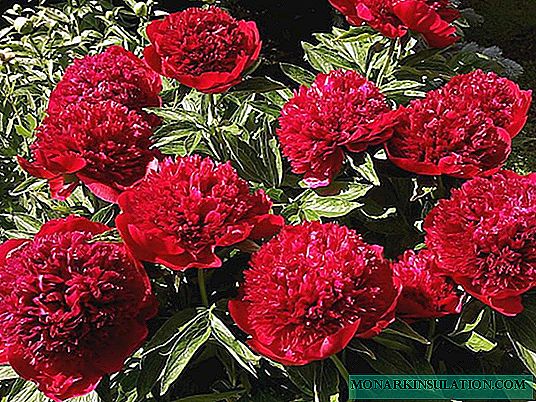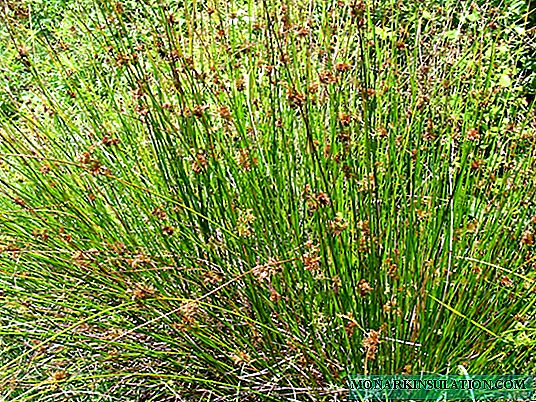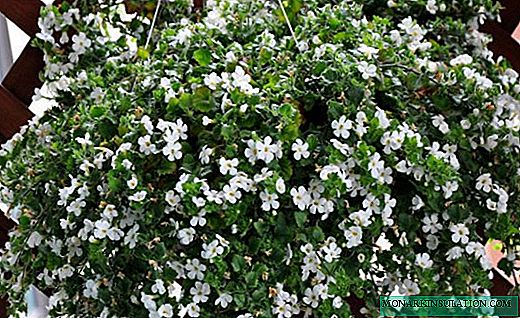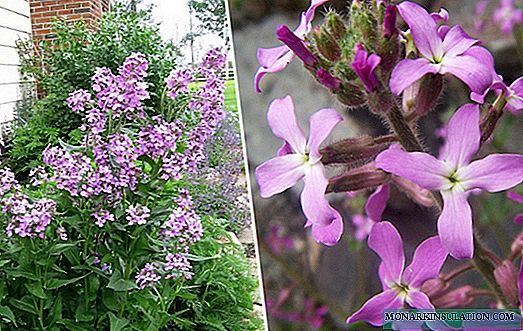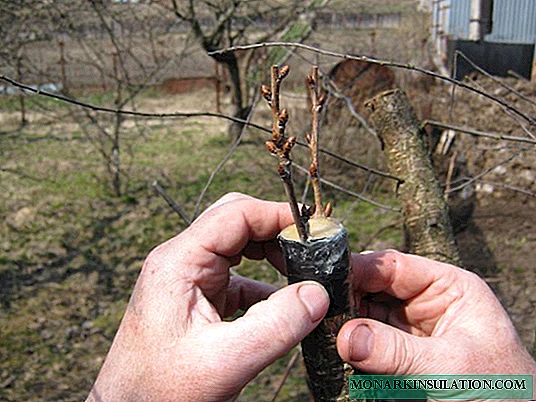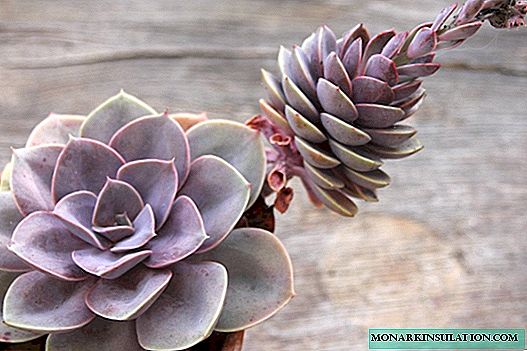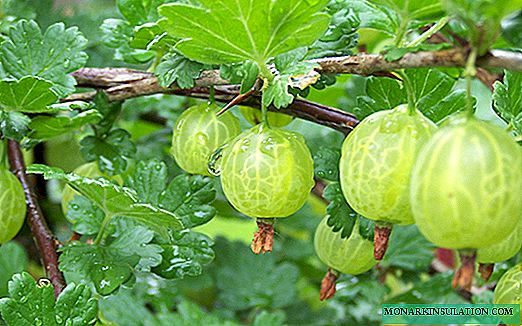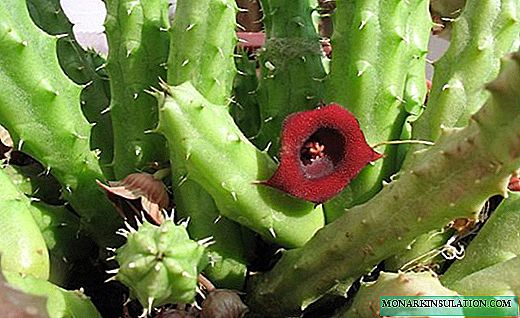Guernia is a very beautiful and unpretentious plant, which is still rarely found in our country. The unusual shape of the shoots and bright flowers prompt you to buy guernia after the first acquaintance with it. The homeland of the plant is the arid region of South Africa and the Arabian Peninsula. From Latin it is more correct to read the name as "garbage", but many gardeners call this succulent simply a cactus.

Guernia Description
Guernia produces several fleshy long stems along which 3-5 sharp ribs are located. Rigid teeth without needles grow on the ribs. Dark green stems sometimes have reddish stains. The height of an adult plant is about 30 cm. There are forms with straight or creeping stems.
The plant is nourished by small, filiform roots, which are located in the upper soil layer. On one shoot, lateral buds can form, from which full-fledged stems grow and guernia takes the form of a branched bush.












Periodically, flower buds form on the shoots, from which very beautiful and bright guernia flowers are formed. They are located on a short pedicel and have the form of a small gramophone or crown. The surface of the fleshy flower is glossy, the pharynx is covered with small growths (papillae). Coloring of flowers is white, yellow or scarlet. There are monophonic buds or coated with contrasting specks.
Guernia is pollinated by flies, so during the flowering period it exudes a pleasant aroma for them and a little disgusting for humans. Its intensity intensifies in hot, sunny weather. Although each bud lives only a couple of days, the flowers cover the stalks abundantly and bloom from its base. Therefore, flowering lasts 2-3 months, from June to early fall. After successful pollination, a small fleshy fruit with small seeds appears in place of the flower.
Popular varieties
The genus guernia has about 60 species. Some of them are very similar, others are fundamentally different.
Guernia of Kenya. Variety with drooping stems about 30 cm long. Shoots have 5 ribs with frequent, bent down denticles. In May-June, flowers appear, they form small inflorescences of 2-5 buds. Each flower has the shape of a bowl and is colored purple. The diameter of the bud is 3 cm, and its edges are covered with pointed teeth.

Guernia striped (zebrina). A short plant up to 10 cm tall, which lives in South West Africa. The width of each stem with four ribs is only 2 cm. When grown in bright sunshine, green shoots are covered with burgundy stripes. Single flowers resemble a five-pointed star with a fused and slightly convex core. The diameter of each flower is 7 cm. The pharynx of flowers is painted in maroon. Closer to the edge of the petals, yellow transverse stripes appear.

Guernia is large-fruited. Upright plant with light green or bluish shoots. The height of the bush is 20 cm. 7 ribs with twisted teeth can be distinguished along the stem. Inflorescences consist of 2-5 buds in the form of a bell. The diameter of each flower is 2 cm. The cup of the bud is painted in burgundy and covered with a darker speck.

Guernia is rough. A medium-sized variety with thin (1.5 cm), 5-rib shoots. The vegetation has a light green color and is densely covered with short but sharp teeth. Bell-shaped flowers with five pointed petals are painted in mauve. The base of the tube is covered with long, dark papillae.

Guernia is hairy. The variety is distinguished by thick, shortened stems, which are densely covered with long teeth. This species most closely resembles an ordinary cactus. The shoots are bright green, the edges of the teeth are gradually painted red. Fleshy flowers resemble a starfish with a wide pharynx. There are varieties with terracotta, yellow and red flower petals. The diameter of the corolla ranges from 2.5-5 cm.

Guernia graceful has short light green rounded shoots with 4-5 sides. Sharp elongated teeth cover the stem all over the base. The flowers resemble crowns and are painted in sand color. Maroon dots are scattered all over the inner surface of the bud.

Breeding methods
Guernia is propagated by seeds and rooting of processes. Seeds are planted in a flat cup with light, sandy soil. Deepen each seed by 1 cm and maintain a distance between seedlings of 2-4 cm. The first seedlings appear after 15-25 days. After another month, they are dived into separate containers and grown as an adult plant.
Upper, smooth parts of shoots without flower buds are suitable for cuttings. Cuttings are cut from an adult plant and left for a day in the open air for wilting the cut. They are planted in a sandy substrate with the addition of a small amount of peat. The roots appear within 2 weeks, after which the process can be transplanted to a permanent place.

Care Rules
To plant guernia, use shallow, wide containers with drainage holes. The bottom of the pot is lined with a layer of expanded clay or brick chips. The soil is selected light, breathable. The following components can be mixed in equal parts:
- soddy soil;
- leaf humus;
- sheet earth;
- coarse river sand;
- charcoal + lime.
Even in the prepared soil for cacti, it is recommended to add a little lime and coal chips.
Guernia loves the bright sun and hot air. She will feel good on the open balcony in the summer heat or on the sunny windowsill. If the south window is constantly closed, you need to create a small shadow for the guernia. Without access to fresh air, the sun can burn stems.
In summer, the plant loves warm places where the air temperature is + 24 ... + 26 ° C. In winter, he needs a period of rest in order to accumulate strength for future flowering. Guernia is transferred to a room with an air temperature of + 15 ... + 18 ° C. Cooling below + 12 ° C can lead to death.

Guernia needs minimal watering. Warm water moistens the soil only after the earth coma has completely dried. In winter, it is enough to water the plant 1-2 times a month. A sign of excessive watering is a shriveled stem with drooping shoots. During the flowering period, fertilizers must be applied. The cactus solution is added to the water for irrigation twice a month.
Every 2-3 years, it is recommended that the guernia be transplanted into a larger pot and renew the soil. This helps to enrich the substrate with nutrients and gives additional space to the root system. A transplant is best done in early spring.

Possible difficulties
Guernia often suffers from various types of rot. The reason for this is excessive watering and not enough warm air. Shoots should be periodically inspected for the presence of brown or gray spots. If signs of the disease appear, remove all damaged areas and less often moisten the soil.
Sometimes you can find a mealybug near guernia. He loves to settle in permeable soil. Insecticides (actara, intavir and others) help get rid of the unpleasant neighborhood.

